Remembering Dismemberment: Catherine Sullivan
Catherine Sullivan, erstwhile dorm-mate of local dancer Dylan Skybrook (who collaborated on this show), has been making exciting video installations and films around the world. Her Triangle of Need is at the Walker through Nov. 18.
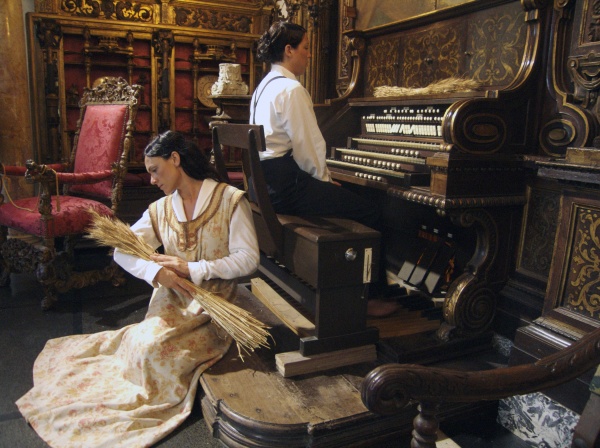
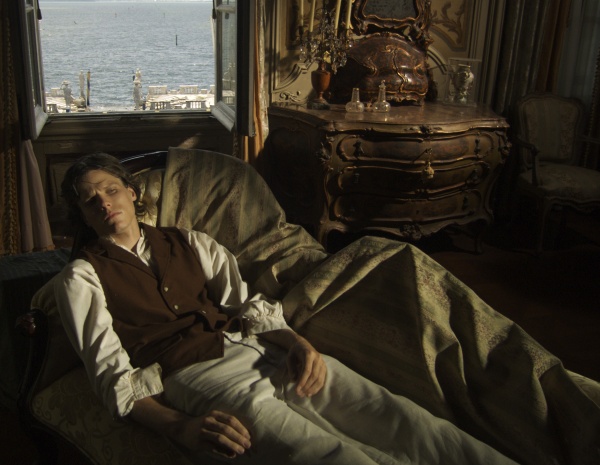

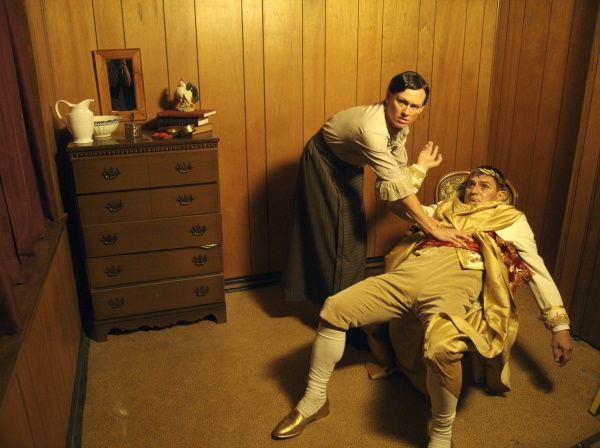
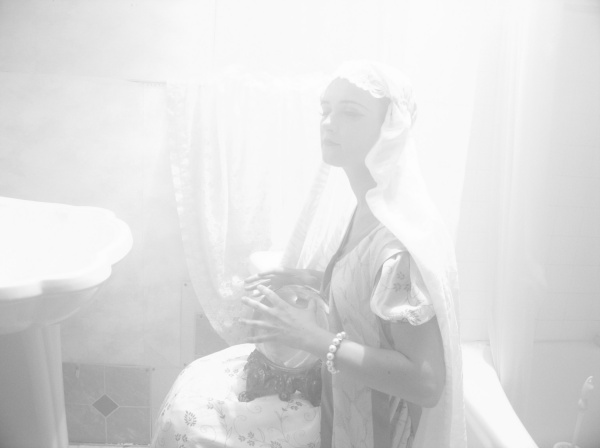
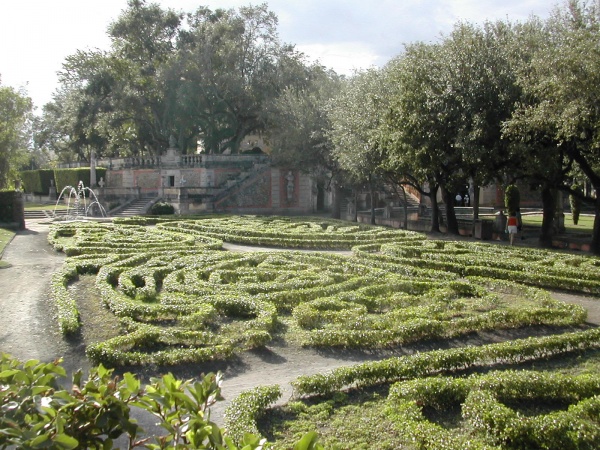
This isn’t a movie, it’s a video installation, in a gallery. You can walk in and see it any time. What’s the difference? Movies, at least here and now, are usually striving to be seamless illusions, alternate worlds in which one disappears for an hour and a half. That’s often a wonderful experience, but it’s not one that Catherine Sullivan is trying to create.
The gallery at the Walker has eight different simultaneous projections going. They are populated with extravagantly dressed actors, playing out tableaus that are difficult to make sense of, therefore difficult to disappear into. You can see these actors from outside, notice the details of gesture and costume, which are often resonant, bringing up connections cultural and personal.
Not getting lost in these performances in some way means seeing their contours more clearly—but you have to hold yourself in place to do so. They lack a continuous story—which usually functions as a kind of sorting device for what’s seen in movies, a way to rationalize the images, make them familiar. These remain strange, which is how they perform their work.
Doryun Chong, the curator of this massively complex show, which was developed for the Walker, notes that Sullivan has constructed a “willfully ‘imperfect apparatus’ for understanding the world and its historical and social contingencies.” This is film that presents its viewers with pieces. The connections between them aren’t always obvious; viewers will, perhaps, hunt down the connections, in history, in the social world, or in said viewer’s reveries or memories or dreams.
At the heart of the different strands of images are three locations (the Vizcaya Mansion, a Florida palace-of-excess built by the industrialist James Deering; a Chicago tenement that represents the dwellings of Deering’s workers; and an ice rink where the extraordinary local skater Rohene Ward dances to a setting of Baudelaire’s wrenchingly beautiful poem “Invitation to the Voyage.”)
What’s the connection? There are lots of them available, but you’ll need to pull them out and try them on for yourself, and the obvious ones don’t seem to be the important ones. The “story” is: there’s a wealthy industrialist who’s located the last two Neanderthals in the world. He’s brought them to his mansion and is trying to make them reproduce. Meanwhile, back in a crappy Chicago apartment, his workers are somehow involved in performing, or living, scenes from the silent films that the industrialist buys from Pathescope Films.
So the workers not only perform the labor that sustains the industrialist in his mansion; they also perform the dream-work that underlies the rising industry of film, the immensely lucrative and culturally influential force that will dominate the world’s consciousness of America all through the twentieth century –which is just beginning, in this narrative. Sullivan’s not so subtle exposure of the industrial nature of film still manages to get in by the back door and insinuate this insight, rather than walking in the front and hitting you in the face.
But the fascination of the piece is less in the overarching stories—even though they’re witty in the ways that they play on more typical leadenfooted accounts of the rise of American industrial and cultural might—than in the loving and almost frenetic inventiveness of the movement and sound of the work.
Dylan Skybrook is well known here for dance made through seeing human movement and capturing and elaborating aspects of it, aspects that through elaboration become both comic and tragic. He’s a kind of dandy of the everyday. In these films, this approach is given lots to work with: lots of bodies, costumes, colors; lots of music and sound.
The elaboration works. Watching the actors and dancers, what you think is, “My god, that must have been so much fun to do!” (Of course, that’s what makes some people really mad at adventurous work like this—it almost always seems like the artists had way more fun making it than viewers can possibly get out of it. )
There’s tons more going on in these films. There are sections filmed by a Nollywood director (yes, folks, it’s Bollywood in Nigeria!). There is music written by Joachim Neander, the inoffensive but eccentric German cleric who gave his name to the valley (thal in German) that gave its name to the bones found there. Neander is thus a kind of unwitting godfather to the Neanderthals, the sort of inexorable and absurd relation that Sullivan seems to delight in. (Neander’s music was pulled into a larger soundscape by Sean Griffin, who wrote the soundtrack.)
There’s an ice rink, and the amazing movement of Rohene Ward, a local figure skater, coming from outside the somewhat airless tradition of figure skating and putting the rigid proprieties of it to shame with his passionate invention. There’s an imagined language, Mousterian, supposedly spoken by these last Neanderthals, invented by Sean Griffin, another collaborator on the project.
All of these things have resonances that will spin out connections with the larger story if you let them. The key thing is to give the piece time. Be prepared to spend two hours—c’mon, it’s less than a Harry Potter film!—relaxing into the spinning resonance of this big filmic playground. It’s a whole new way of thinking movies.
Related Events: Sept 13, artist talk, Catherine Sullivan, Dylan Skybrook, Sean Griffin, 7 pm